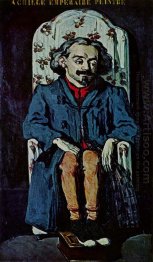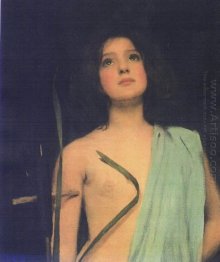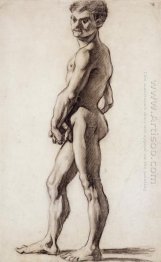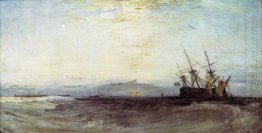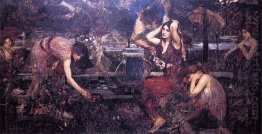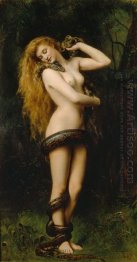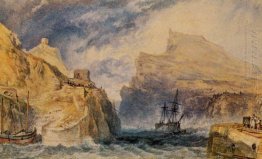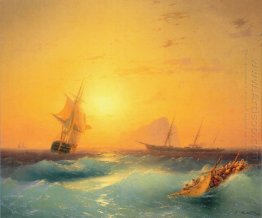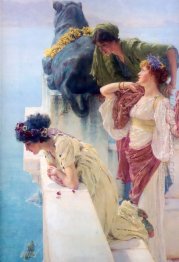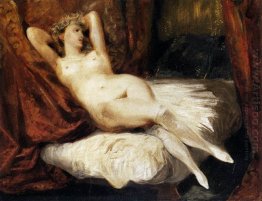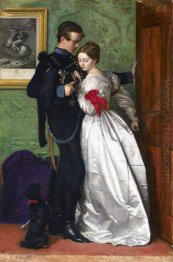Romanticism

Romanticism is one of the curiosities of literary history that the strongholds of the Romantic Movement were England and Germany, not the countries of the romance languages themselves. Thus it is from the historians of English and German literature that we inherit the convenient set of terminal dates for the Romantic period, beginning in 1798, the year of the first edition of Lyrical Ballads by Wordsworth and Coleridge and of the composition of Hymns to the Night by Novalis, and ending in 1832, the year which marked the deaths of both Sir Walter Scott and Goethe. However, as an international movement affecting all the arts, Romanticism begins at least in the 1770's and continues into the second half of the nineteenth century, later for American literature than for European, and later in some of the arts, like music and painting, than in literature. This extended chronological spectrum (1770-1870) also permits recognition as Romantic the poetry of Robert Burns and William Blake in England, the early writings of Goethe and Schiller in Germany, and the great period of influence for Rousseau's writings throughout Europe.
The movement stressed strong emotion as a source of aesthetic experience, placing new emphasis on such emotions as trepidation, horror and awe-especially that which is experienced in confronting the sublimity of untamed nature and its picturesque qualities, both new aesthetic categories. It elevated folk art and custom to something noble, and argued for a "natural" epistemology of human activities as conditioned by nature in the form of language, custom and usage.
Our modern sense of a romantic character is sometimes based on Byronic or Romantic ideals. Romanticism reached beyond the rational and Classicist ideal models to elevate medievalism and elements of art and narrative perceived to be authentically medieval, in an attempt to escape the confines of population growth, urban sprawl and industrialism, and it also attempted to embrace the exotic, unfamiliar and distant in modes more authentic than chinoiserie, harnessing the power of the imagination to envision and to escape.
Although the movement is rooted in German Pietism, which prized intuition and emotion over Enlightenment rationalism, the ideologies and events of the French Revolution laid the background from which Romanticism emerged. The confines of the Industrial Revolution also had their influence on Romanticism, which was in part an escape from modern realities, indeed, in the second half of the 19th century, "Realism" was offered as a polarized opposite to Romanticism. Romanticism elevated the achievements of what it perceived as misunderstood heroic individuals and artists that altered society. It also legitimized the individual imagination as a critical authority which permitted freedom from Classical notions of form in art. There was a strong recourse to historical and natural inevitability, a zeitgeist, in the representation of its ideas.
In a basic sense, the term "Romanticism" has been used to refer to certain artists, poets, writers, musicians, as well as political, philosophical and social thinkers of the late 18th and early to mid 19th centuries. It has equally been used to refer to various artistic, intellectual, and social trends of that era. Despite this general usage of the term, a precise characterization and specific definition of Romanticism have been the subject of debate in the fields of intellectual history and literary history throughout the twentieth century, without any great measure of consensus emerging. Arthur Lovejoy attempted to demonstrate the difficulty of this problem in his seminal article "On The Discrimination of Romanticisms" in his Essays in the History of Ideas (1948), some scholars see romanticism as essentially continuous with the present, some see in it the inaugural moment of modernity, some see it as the beginning of a tradition of resistance to the Enlightenment-a Counter-Enlightenment-and still others place it firmly in the direct aftermath of the French Revolution. An earlier definition comes from Charles Baudelaire: "Romanticism is precisely situated neither in choice of subject nor exact truth, but in the way of feeling."
Many intellectual historians have seen Romanticism as a key movement in the Counter-Enlightenment, a reaction against the Age of Enlightenment. Whereas the thinkers of the Enlightenment emphasized the primacy of deductive reason, Romanticism emphasized intuition, imagination, and feeling, to a point that has led to some Romantic thinkers being accused of irrationalism.
In visual art and literature, Romanticism found recurrent themes in the evocation or criticism of the past, the cult of "sensibility" with its emphasis on women and children, the heroic isolation of the artist or narrator, and respect for a new, wilder, untrammeled and "pure" nature. Furthermore, several romantic authors, such as Edgar Allan Poe and Nathaniel Hawthorne, based their writings on the supernatural, occult and human psychology.
The Scottish poet James Macpherson influenced the early development of Romanticism with the international success of his Ossian cycle of poems published in 1762, inspiring both Goethe and the young Walter Scott.
An early German influence came from Johann Wolfgang Goethe whose 1774 novel The Sorrows of Young Werther had young men throughout Europe emulating its protagonist, a young artist with a very sensitive and passionate temperament. At that time Germany was a multitude of small separate states, and Goethe's works would have a seminal influence in developing a unifying sense of nationalism. Another philosophic influence came from the German idealism of Johann Gottlieb Fichte and Friedrich Schelling, making Jena (where Fichte lived, as well as Schelling,Hegel, Schiller and the brothers Schlegel) a center for early German romanticism ("Jenaer Romantik"). Important writers were Ludwig Tieck, Novalis (Heinrich von Ofterdingen, 1799), Heinrich von Kleist and Friedrich Hoelderlin. Heidelberg later became a center of German romanticism, where writers and poets such as Clemens Brentano, Achim von Arnim, and Joseph Freiherr von Eichendorff met regularly in literary circles. Important motifs in German Romanticism are travelling, nature, and ancient myths. The later German Romanticism of, for example, E. T. A. Hoffmann's Der Sandmann (The Sandman), 1817, and Joseph Freiherr von Eichendorff's Das Marmorbild (The Marble Statue), 1819, was darker in its motifs and has gothic elements.
In predominantly Roman Catholic countries Romanticism was less pronounced than in Germany and Britain, and tended to develop later, after the rise of Napoleon. Francois-Rene de Chateaubriand is often called the "Father of French Romanticism". In France, the movement is associated with the nineteenth century, particularly in the paintings of Theodore Gericault andEugene Delacroix, the plays, poems and novels of Victor Hugo (such as Les Miserables and Ninety-Three), and the novels of Stendhal.
In Russia, the principal exponent of Romanticism is Alexander Pushkin. Mikhail Lermontovattempted to analyse and bring to light the deepest reasons for the Romantic idea of metaphysical discontent with society and self, and was much influenced by Lord Byron. The poet Fyodor Tyutchev was also an important figure of the movement in Russia, and was heavily influenced by the German Romantics.
In the United States, romantic gothic literature made an early appearance with Washington Irving's The Legend of Sleepy Hollow (1820) and Rip Van Winkle (1819), followed from 1823 onwards by the Leatherstocking Tales of James Fenimore Cooper, with their emphasis on heroic simplicity and their fervent landscape descriptions of an already-exotic mythicized frontier peopled by "noble savages", similar to the philosophical theory of Rousseau, exemplified by Uncas, from The Last of the Mohicans. There are picturesque "local color" elements in Washington Irving's essays and especially his travel books. Edgar Allan Poe's tales of the macabre and his balladic poetry were more influential in France than at home, but the romantic American novel developed fully in Nathaniel Hawthorne's atmosphere and melodrama. Later Transcendentalist writers such as Henry David Thoreau and Ralph Waldo Emerson still show elements of its influence and imagination, as does the romantic Realism of Walt Whitman.
But by the 1880s, psychological and social Realism was competing with romanticism in the novel. The poetry of Emily Dickinson-nearly unread in her own time-and Herman Melville's novel Moby-Dick can be taken as epitomes of American Romantic literature. As in England, Germany, and France, literary Romanticism had its counterpart in American visual arts, most especially in the exaltation of untamed America found in the paintings of the Hudson River School. Painters like Thomas Cole, Albert Bierstadt and Frederic Edwin Church and others often combined a sense of the sublime with underlying religious and philosophical themes. Thomas Cole's paintings feature strong narratives as in The Voyage of Life series painted in the early 1840s that depict man trying to survive amidst an awesome and immense nature, from the cradle to the grave.







